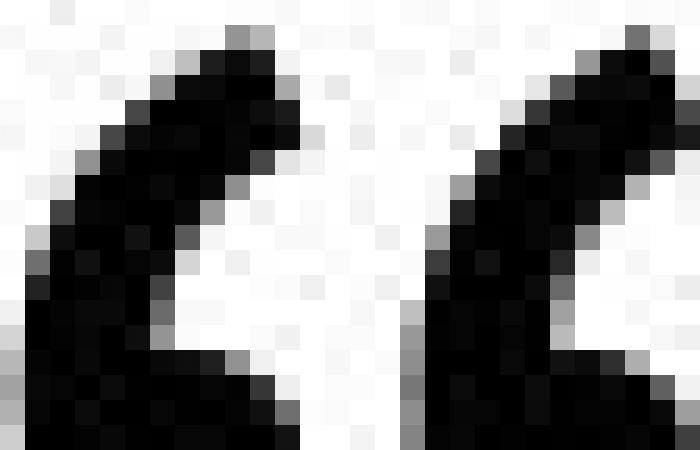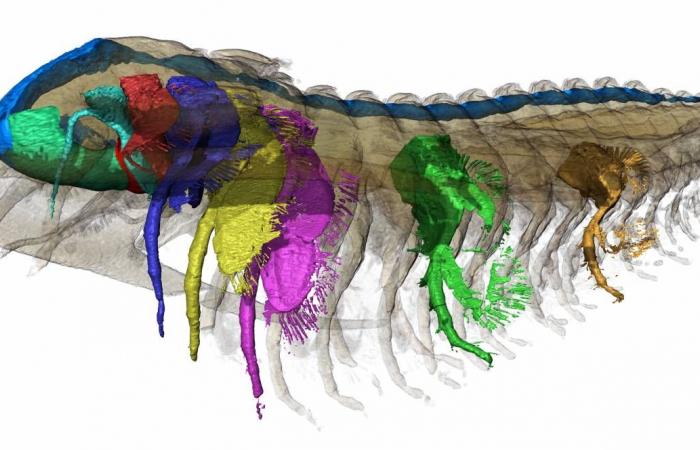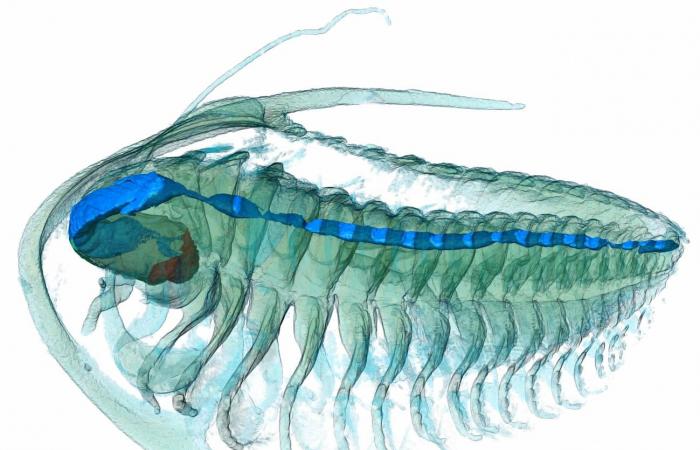The trilobites dominated the oceans for 350 million years, when life was concentrated in these bodies of water and the land surface was a hostile landscape for life. They are perhaps the best-known creatures of the Cambrian and were extremely diverse.
To date, more than 22,000 species of these extinct marine animals have been identified, thanks to the hard exoskeleton they had, a fact that facilitates their identification within the fossil record.
A team of scientists has just discovered new remains of these arthropods in the Tatelt training in Morocco with very peculiar characteristics, since they were quickly buried by volcanic ash, in a process “similar to that of Pompeii”, according to the story, so the complete anatomy of these trilobites has been exposed.
I organized several field trips to the area to explore and look for other specimens. It was then when we found the best preserved fossils
Abder El Albani, University of Poitiers
“The first fossil of this species was accidentally found by other non-specialist researchers who were at the site before me and alerted me to its existence. I then organised several field trips to the area to explore and look for other specimens. It was then that we found the best preserved ones. This task was quite a challenge due to the scarcity of the fossils and the hardness of the rock that contained them,” he tells SINC. Abder El Albanilead author of the study and researcher at the University of Poitiers (France).
In the description of these fossils, published in the magazine Sciencefor example, microscopic details of its anatomy, the shape of its appendages or its digestive system are revealed.
“Trilobite fossils are very common, but paleontologists usually find only their hard exoskeletons. Other much rarer specimens (for example, those from the famous Burgess Shale in Canada) also show some soft body parts of these creatures, such as antennas and walking legs,” he explains to SINC John Patersonfrom the University of New England (Australia) and co-author of the work.
“But even these anatomical features can be obscured when they are flattened into two dimensions or hidden by sediment. The new remains not only preserve antennae and walking legs, but also mouth structures and even the entire digestive system in three dimensions (3D),” he adds.

The new remains not only preserve the antennae and walking legs, but also oral structures and even the entire digestive system in 3D
John Paterson, University of New England

Until now, features of parts such as soft tissue appendages and internal organs were rarely preserved and had a very limited fossil record.
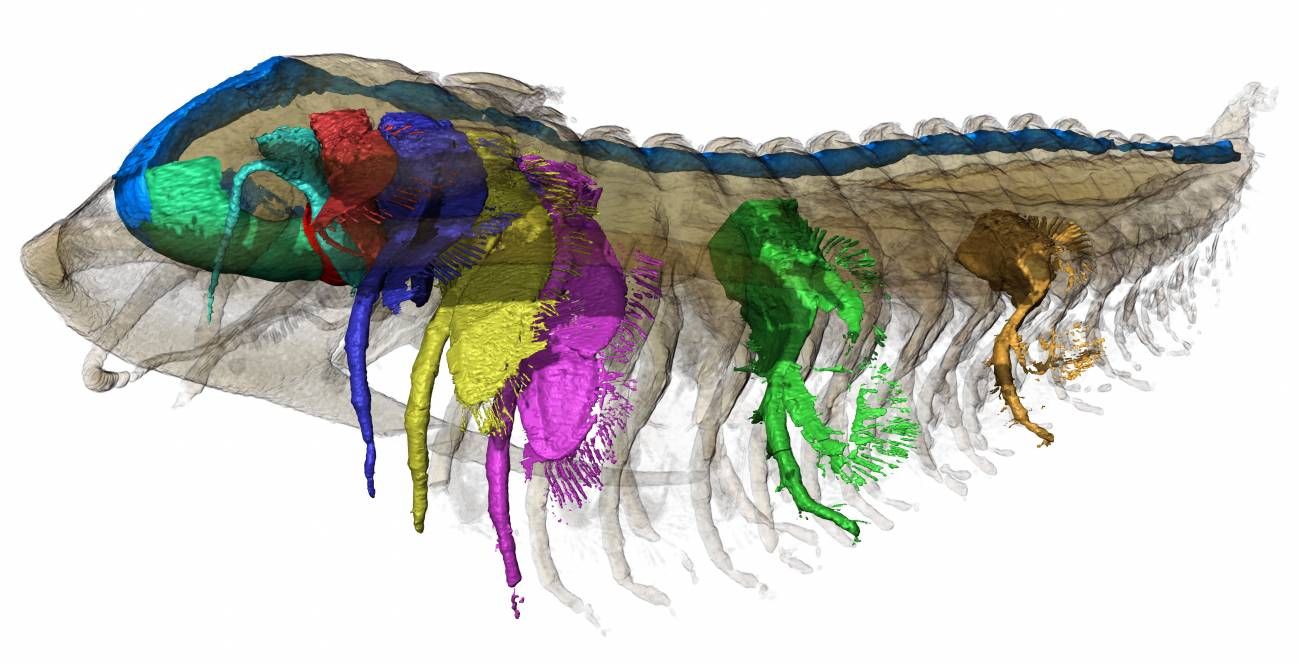
Lateral view of the 3D reconstruction rendered with transparency and showing the segmentation of the digestive tract (blue), the hypostome (green), the labrum (red) and selected appendages. / © Arnaud Mazurier
Details of its feeding structure
The trilobites from this site were fossilized when they were quickly buried by the ashes from a single pyroclastic flow event that devastated a shallow marine environment. This event caused them to be buried instantly and their state of preservation is intact in 3D, both the exoskeleton and the soft anatomy contained in it.

Thanks to the deposit of volcanic ash and very early cementation, preservation is very rapid.
Abder El Albani

“Thanks to the deposit of volcanic ash and very early cementation, preservation is very rapid. This type of preservation (Pompeii type) allows for excellent fossilization, showing detail with very high resolution,” adds El Albani.
With the analysis of microtomographic X-ray images From these fossils, the researchers were able to observe anatomical features, such as the trilobite’s articulated and undistorted exoskeleton, its antennae, post-antennal appendages, digestive system and other soft tissues.
“This type of imaging involves taking multiple X-ray slices of the specimen, which are then digitally reconstructed into a single, high-resolution three-dimensional image. This allowed us to study the exquisite anatomical details of these trilobites,” he explains. Paterson.
The authors of the work also describe previously unknown anatomical characteristics, such as their novel feeding structuresa slit-like mouth opening and specialized head appendages, which form a complex feeding apparatus around the mouth.

For decades, paleontologists have suspected that trilobites possessed a labrum, but convincing evidence was lacking.
John Paterson

“We observed that the appendages located near the mouth had curved, spoon-like bases, which often went unnoticed in less pristine fossil specimens. Previous hypotheses suggested that trilobites had three pairs of cephalic appendages behind their long antennae, but our study on the Moroccan species revealed the presence of four pairs instead,” says the sedimentologist from the University of Poitiers.
“In addition, our findings include documentation of a fleshy lobe previously unknown covering of the mouth, called the labrum, which represents an important discovery in trilobite anatomy,” he continued.
Paterson adds: “For decades, paleontologists have suspected that trilobites possessed a labrum, but convincing evidence was lacking. Our discovery now confirms its existence. Another key discovery is the first pair of head appendages behind antennae, which have ‘spiny spoons’, used to chew and collect food in the mouth. Attached to these are antenna-like structures that may have acted as taste receptors or tactile sensors. “This has never been observed before in other trilobite specimens.”
Scientists hope these findings will lead to other volcanic ash deposits in marine environments, with significant potential for preserving soft-bodied creatures or highly detailed anatomy like the Tatelt trilobites.
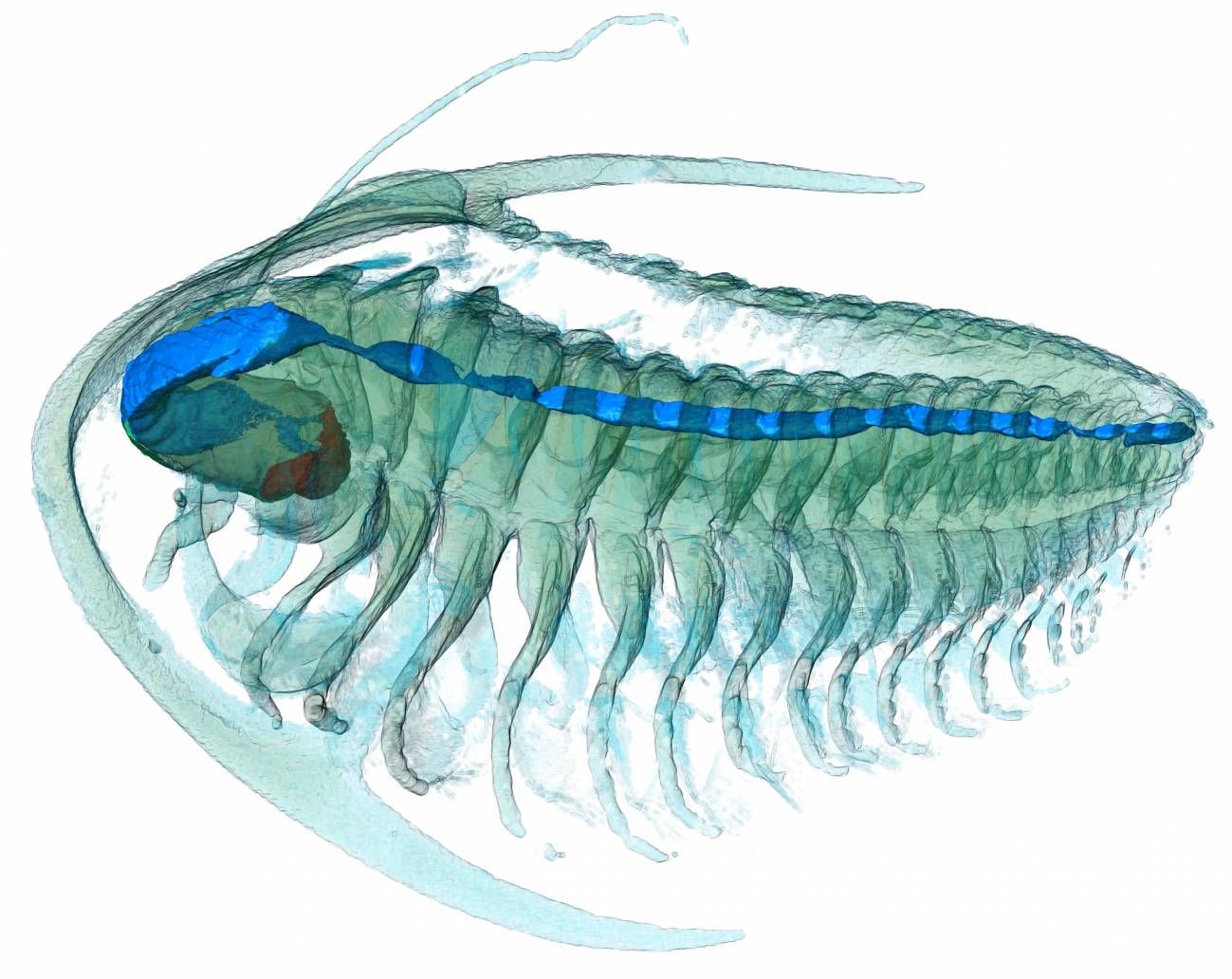
Dorsal view of the 3D reconstruction. / © Arnaud Mazurier
Reference:
Albani et al. “Rapid volcanic ash entombment reveals the 3D anatomy of Cambrian trilobites.” Science.



